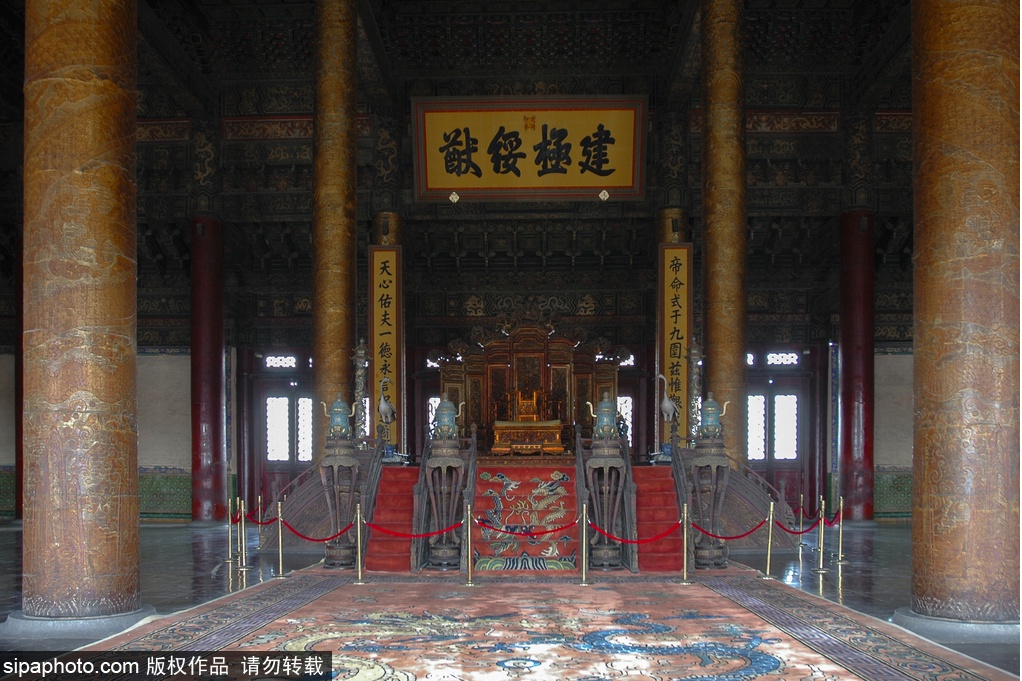The Taihe Palace is the most superior palace in the Forbidden City, commonly known as the “Golden Emperor’s Hall” in the imperial palace among ordinary people. It was first built in the reign of Emperor Yongle in the Ming Dynasty. Since then, the palace suffered damages inflicted by multiple disasters and was rebuilt many times. It was renamed the Huangji Palace in the Jiajing years of the Ming Dynasty. After the Qing regime established Beijing as its capital, it acquired its present name the Taihe Palace with the implied meaning of a harmonious country. Today’s Taihe Palace is what has remained of the Taihe Palace were constructed during the Kangxi years of the Qing Dynasty.

The Taihe Palace is the biggest and most superior building in the Forbidden City. It definitely ranks first among ancient Chinese buildings in terms of its standards and the exquisite decoration. There is a 3.4-meter-tall dawen on either end of the ridge, 10 beasts on the eaves and tens of thousands of golden dragon designs both inside and outside the hall, all of which are peerless among extant ancient buildings.
In front of the Taihe Palace is a broad platform called Danbi. On the platform are displayed a sundial, a grain measure, a bronze tortoise, a bronze crane and a bronze tripod. All those stand for the superiority of imperial power and the permanence of the throne. Under the palace is a three-layer white marble base carved with patterns and surrounded by a handrail. There are stone dragon heads under the handrail. Whenever it rains heavily, you can see water gushing out of thousands of dragons.
The Taihe Palace used to be the place where grand events like enthronization, wedding, expedition and holiday celebrations were held during the Ming and Qing dynasties. It stands upright in the center of the Forbidden City. The axle wire of the capital city- the meridian line ascends along the stone path with dragon patterns to the platform and passes under the throne of the emperor. Whenever the emperor is seated in his throne on grand ceremonies to accept the worship of nobles and officials, the dignity and majesty of the emperor is manifested.



